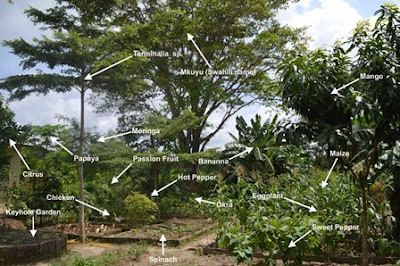PDC LESSON 7.3 COMPOST – THE SCIENCE OF COMPOSTING
PERMACULTURE COURSE AGRO-ECONOMY
PDC LESSON 7.3 COMPOST –
THE SCIENCE OF COMPOSTING
The Science of Composting
A compost heap
contains a wide diversity of living things. Soil organisms are the main
catalysts in the heap breaking down compounds into carbohydrates and proteins
through enzymic digestion. The carbohydrates break down into simple sugars,
organic acids, and carbon dioxide. Proteins are converted into peptides, amino
acids, ammonium compounds, atmospheric nitrogen and finally nitrate, which is a
form of nitrogen that is available to plants.
Bacteria need sufficient oxygen and moisture to survive and when
conditions are favourable in the compost heap, they can multiply at an amazing
rate by reproducing themselves every five minutes!
Bacteria need carbon for energy and nitrogen to grow and reproduce. They get the energy from oxidising the carbon (turning it into carbon dioxide) and the heat in the compost heap is the result of this oxidation, as they burn up the carbon. Getting the right balance of carbon and nitrogen is therefore crucial If the bacteria have too much or too little of either element they will die. Think brown and green when trying to identify the two elements for the compost heap.
Text from the roots, Elisabeth Ferkonia (Aus.) PDC
studied with Bill Mollison, Chart Geoff Lawton



Comments
Post a Comment